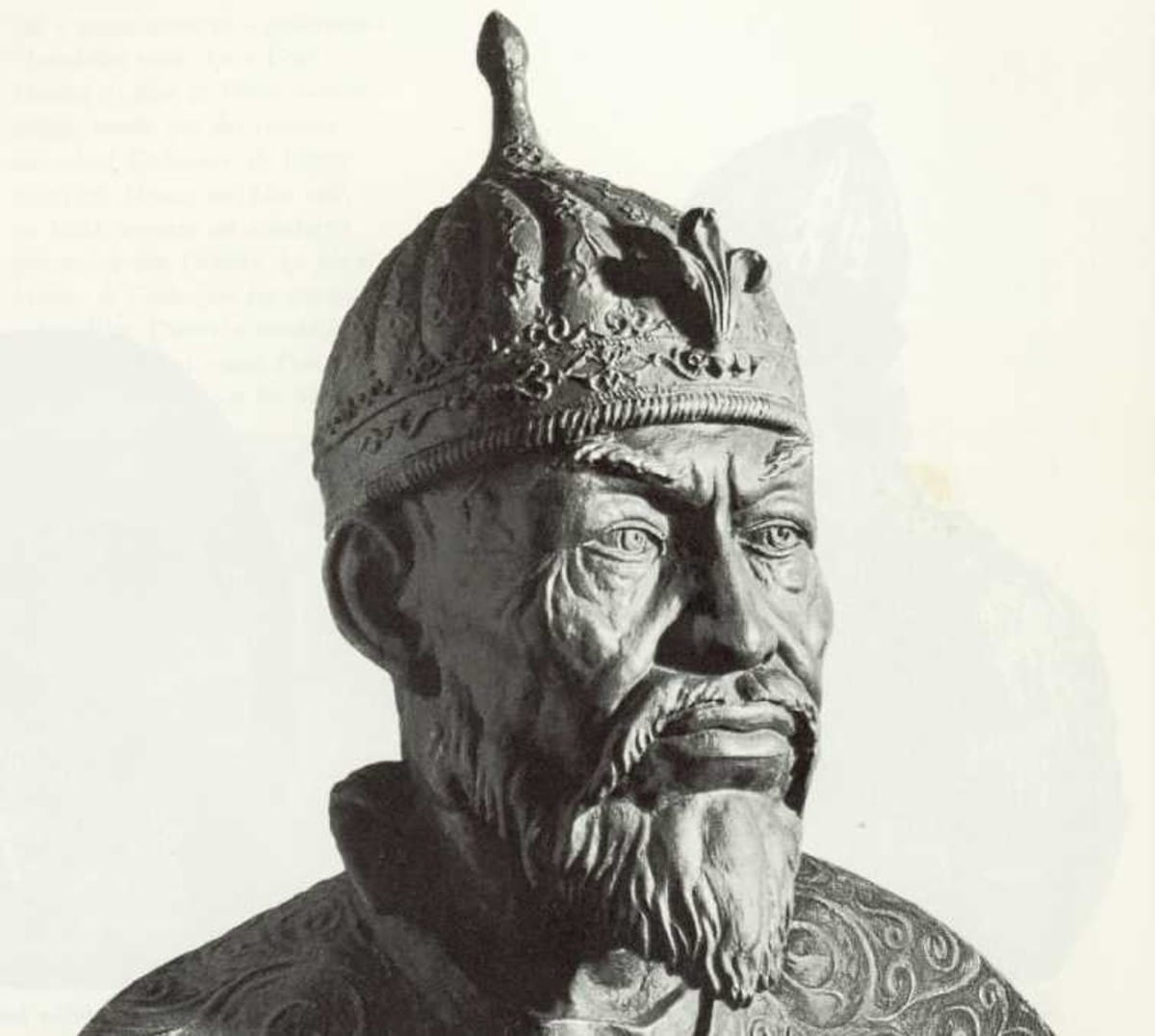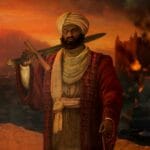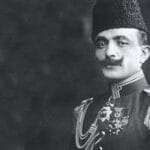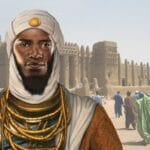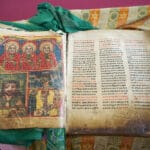Step into the extraordinary world of Timur, a conqueror who left his imprint on the Eurasian landscape. With a story as fascinating as it is enigmatic, prepare to delve into the captivating life of the man known as Tamerlane. From his humble origins to his rise as a ruthless emperor, discover the intriguing facts that shaped the legacy of this enigmatic warrior. His military prowess and vast empire continue to captivate historians and enthusiasts alike, making Timur an enduring figure in the annals of history.
Captivating Facts about Tamerlane (Timur)
Ready to dive into a world of empires and conquests? Let’s talk about Tamerlane (Timur), a historical figure shrouded in equal measures of fascination and infamy. He wasn’t just about battles and bloodshed though – there’s more to this 14th-century conqueror than meets the eye. Buckle up, because we’re about to uncover some captivating facts about the man who carved his name across Asia.
1. Military Genius or Ruthless Tactician? You Decide.
Think of the greatest military minds in history – Tamerlane deserves a spot on that list. This wasn’t a ruler who sat back and commanded from afar. He was a strategist who loved to get his hands dirty, leading his armies from the front lines.
What made his tactics so successful? Imagine a cunning chess player, always thinking five steps ahead. Tamerlane was known for spotting his enemies’ weaknesses and exploiting them mercilessly. He’d cut off supplies, leaving his foes starving and desperate. And if that wasn’t enough, he wasn’t afraid to use scorched earth techniques – a brutal strategy that left a trail of destruction in its wake.
His enemies called it cruelty; his supporters called it genius. What do you think?
2. Patron of the Arts: The Unexpected Side of a Conqueror
Here’s where things get really interesting. Tamerlane wasn’t just about winning wars – he genuinely appreciated the finer things in life. A true patron of the arts and sciences, he poured resources into transforming his empire into a cultural hub.
Think breathtaking architectural wonders like the Gur-e-Amir mausoleum – a masterpiece that reflects his love for beauty and grandeur. Under his rule, scholars and artists weren’t just surviving, they were thriving. He gave them the freedom and support they needed to innovate, leading to a golden age of cultural growth throughout his domain.
It makes you wonder: was this his way of balancing the scales after so much conflict?
3. A Just Ruler? The Debate Continues
History remembers Tamerlane as a mighty conqueror, but some scholars argue there was another side to him – a ruler deeply concerned with justice. While his military campaigns were undeniably brutal, he seems to have ruled his own people with a different approach.
Imagine a society where the law applied to everyone, regardless of their social standing. Tamerlane established a system where people could bring their grievances before him, and he prided himself on delivering fair judgments. This earned him the respect and loyalty of his subjects, who saw him as a protector and a beacon of justice.
Of course, historians continue to debate the extent of his fairness, especially given the violent nature of his conquests. What do you believe?
4. From Central Asia to Persia: Spreading Islamic Culture Through Conquest
As Tamerlane’s empire expanded, so did the reach of Islamic culture and architecture. His conquests weren’t just about gaining land—they were also about spreading ideas and beliefs.
Picture this: grand mosques and madrasas (Islamic schools) popping up in cities across Central Asia and Persia, each one a testament to the growing influence of Islam. But here’s the fascinating part: Tamerlane wasn’t simply imposing his culture on others. He actually encouraged the blending of different artistic styles, creating a unique fusion of Central Asian and Persian traditions.
The result? An explosion of creativity that left an indelible mark on the art, architecture, and cultural landscape of the regions he ruled.
5. A Legacy Forged in Stone and Story
Centuries after his death, Tamerlane’s legacy continues to fascinate and inspire. He’s a figure who defies easy categorization – a brilliant military strategist, a ruthless conqueror, a patron of the arts, and a ruler who claimed to value justice. It’s this complexity that makes him such a captivating figure to study.
From the imposing palaces of Samarkand to the intricate tilework adorning mosques across Persia, the echoes of Tamerlane’s reign are still visible today. His story reminds us that history is rarely black and white. It’s a tapestry woven from countless threads, full of contradictions, complexities, and endless opportunities for exploration.
What is a Fact About Tamerlane?
We’ve been talking about Tamerlane, this larger-than-life figure who stormed across Asia centuries ago. But here’s a fact that might surprise you: he wasn’t born with a silver spoon in his mouth.
Tamerlane’s story began far from the grandeur and power he’d later achieve. Imagine this: a young Tamerlane, not a mighty emperor yet, but a sheep herder, maybe even dabbling in a little banditry on the side.
It seems almost unbelievable, right? This guy, who’d go on to conquer empires, started out as a nobody. But that’s the thing about history, it’s full of unexpected twists and turns. This humble beginning just makes his meteoric rise to power even more astonishing. It paints a picture of ambition, cunning, and a relentless drive that would eventually see him commanding armies and redrawing the map of Asia.
What is Timur Best Known For?
We’ve been discussing Timur, this larger-than-life figure from history. But what exactly is he most remembered for? What made him stand out from the crowd, so to speak?
Well, one thing’s for sure: the guy was a military mastermind. We’re talking undefeated armies marching across continents, leaving a string of defeated opponents in their wake. He seemed to have a knack for strategy and wasn’t afraid to use it. This wasn’t always pretty, though. Those victories often came with a hefty price tag – countless lives lost and cities reduced to rubble. It’s a side of his story that’s hard to ignore.
But here’s where things get interesting. Timur wasn’t just about brute force. He actually had a bit of a soft spot for the arts and sciences. Imagine that! This supposed warrior king was also a patron of scholars, commissioning magnificent buildings, and generally encouraging cultural growth. It paints a pretty complex picture, right?
And that’s the thing about Timur—he’s an enigma. Some folks look at him and see a ruthless tyrant, a symbol of destruction. Others see a shrewd leader who, in his own way, contributed to the advancement of Islamic civilization. It’s a debate that continues to this day, with historians and scholars digging into the nuances of his reign.
To get a better grasp on this complicated legacy, it helps to break it down a bit:
| Aspect | Description |
|---|---|
| Military Prowess | Timur’s military strategies were innovative for his time, and his armies were renowned for their discipline and effectiveness. He conquered vast territories. |
| Ruthlessness | His conquests were marked by extreme brutality and bloodshed. Entire cities were razed, and populations decimated, earning him a fearsome reputation. |
| Patronage | Timur was a known patron of the arts, literature, and architecture. He commissioned impressive mosques, libraries, and observatories, fostering a cultural bloom. |
So, what’s the final verdict? Was he a visionary leader or a brutal conqueror? Honestly, it’s probably a bit of both. The truth often lies somewhere in the gray areas. What’s certain is that Timur’s impact on history is undeniable. He left an indelible mark on the world stage, and his story continues to fascinate and challenge us centuries later.
Why is Timur Important to World History?
We’ve been talking about Timur (or Tamerlane, as some folks call him), and why he’s such a big deal in history. This guy’s story is full of twists and turns!
One of the biggest reasons Timur is remembered is because of how much he shook up the map of Eurasia. Imagine a time when massive empires weren’t just a thing of the past. Timur built one that stretched all the way from India to the Mediterranean Sea! This wasn’t just about conquering land; it completely changed the way things worked in those times. When you have one giant empire connecting different parts of the world, people start sharing ideas, trading goods, and even just bumping into each other more often. It was basically Globalization 1.0, centuries before anyone thought of the internet!
But Timur wasn’t just a warrior king who loved to conquer; he actually really appreciated art and knowledge. Under his rule, Central Asia became a haven for artists, thinkers, and anyone with a thirst for learning. He even commissioned some seriously impressive buildings, like the Gur-e-Amir mausoleum—talk about a guy with style! It’s like he had this whole other side to him, a side that wanted to leave behind a legacy of beauty and knowledge alongside his reputation as a powerful ruler.
Now, let’s talk about his military skills. Timur was a military mastermind, a bit like a chess player who always seemed to be five moves ahead of his opponents. He planned his attacks carefully, using innovative tactics and strategies that still impress military historians today. He knew how to use the element of surprise, and he understood the power of psychological warfare – sometimes, just the thought of Timur’s army marching towards them was enough to make his enemies surrender! His military achievements weren’t just about brute force; they were about strategy, clever planning, and knowing exactly how to outsmart the enemy.
Here’s the thing about Timur—he’s a bit of a walking contradiction. On the one hand, he was responsible for a lot of destruction and suffering. His conquests led to countless battles and loss of life, a grim reality of warfare during that time. But on the other hand, he fostered a period of cultural exchange and economic growth. It’s a complex legacy, one that historians are still trying to fully understand. Was he a ruthless conqueror, or a visionary leader who brought different cultures together? Maybe he was a bit of both. What’s certain is that Timur’s impact on world history is undeniable, and his story continues to fascinate and intrigue us centuries later.
Why is Tamerlane Important?
So, we’ve talked about how Tamerlane built this huge empire, but what makes him so important in the grand scheme of things? Why should we still care about a guy who was conquering stuff over 600 years ago? Well, Tamerlane’s impact goes way beyond just the battles he won. He wasn’t just some power-hungry warlord; he had a lasting effect on both the political landscape and the culture of Asia.
Think of it this way: Imagine a giant chessboard representing Asia back then. Every time Tamerlane went on a campaign, it was like he was making a power move on that chessboard, completely changing the way the game was played. His conquests reshaped borders, wiped out old dynasties, and paved the way for new empires to rise.
But here’s the thing: Tamerlane wasn’t just about brute force. Some scholars believe his military successes weren’t just due to the size of his armies, but also his ability to plan and use innovative tactics. He thought several steps ahead of his enemies, which is probably why he racked up victory after victory. We’re talking about a guy who was considered one of the greatest military minds of his time, and historians still study his campaigns today to learn from his strategies.
Now, we can’t talk about Tamerlane without addressing the elephant in the room: the guy was ruthless. His conquests often came with a lot of bloodshed and destruction, and he could be incredibly brutal to those who opposed him. It’s a dark side to his legacy that we can’t ignore.
However, there’s another side to the story, too. Tamerlane was also a big patron of the arts and sciences. Under his rule, cities like Samarkand flourished, becoming centers of learning and culture. He poured resources into building magnificent mosques, libraries, and observatories, inviting scholars and artists from all over to contribute to his empire. These architectural wonders still stand today, a testament to the cultural blossoming that occurred under his rule.
So, is Tamerlane a hero or a villain? Well, it’s complicated. He was a study in contrasts – a brilliant military strategist and a ruthless conqueror, a patron of arts and a tyrant who left a trail of destruction in his wake. Ultimately, judging historical figures isn’t about labeling them as simply “good” or “bad.” It’s about understanding the complexities of their actions and the long-term impact they had on the world, and there’s no doubt that Tamerlane’s impact was huge. He’s one of those figures from history that continues to fascinate and provoke debate even centuries later, and there’s still so much to uncover and understand about his life and legacy.
Why was Tamerlane Called Timur the Lame?
We’ve been talking about Tamerlane, this incredible conqueror who carved out a massive empire. You might be wondering, “Why is he called ‘Tamerlane’ anyway?” Well, it all goes back to this nickname he got because of a disability. Early on in his life, probably during his younger years as an up-and-coming warrior, Tamerlane got hurt pretty badly. We’re talking injuries that left him with a limp for the rest of his life.
Now, imagine being in a time when physical strength was super important, especially for a leader. His rivals, mainly the Persians, thought it was a great opportunity to poke fun at him. They started calling him “Timur-i-leng” – which basically translates to “Timur the Lame” in Persian. And, as these things often do, the nickname stuck.
Over time, that Persian nickname “Timur-i-leng” kind of morphed into “Tamerlane” as his story spread west into Europe. You gotta admit, it’s a pretty catchy name, even if it wasn’t meant as a compliment. The irony is, Tamerlane was anything but lame when it came to military prowess. He was a brilliant strategist and a fearless leader, leading his armies to victory after victory despite his physical challenges. His enemies might have mocked his limp, but they sure learned to fear his name!
It just goes to show you, sometimes the things people try to use against you can become the things that make you stand out in history. Tamerlane’s story is a testament to the fact that true strength comes from within, and a little thing like a limp can’t stop a determined mind.
How Long Did Tamerlane Rule?
We’ve been talking about Tamerlane, this powerful conqueror who left a huge mark on history. You might be wondering just how long he was in charge. Well, Tamerlane’s reign, from beginning to end, lasted for 35 years. That’s a pretty long time for any ruler, especially one known for his military campaigns!
His time in power started around April 9th, 1370, and went on until his death on February 18th, 1405. During these 35 years, he established a vast empire, often referred to as the Timurid Empire. Imagine a territory stretching all the way from modern-day Afghanistan to the southern reaches of Russia – that gives you an idea of just how far his influence reached.
Timur’s accomplishments weren’t limited to the battlefield. He also had a keen interest in art and architecture, leaving his mark on the cultural landscape as well. His reign ushered in what some historians call the Timurid Renaissance, a period marked by a flourishing of artistic expression and intellectual pursuits.
While we can say with certainty that Tamerlane ruled for 35 years, pinning down the exact start and end dates of historical events can sometimes be tricky. These dates, based on historical records, are our best understanding, but there’s always room for further research and potential adjustments as new discoveries come to light.
What is the Summary of Tamerlane?
Let’s delve a little deeper into Tamerlane’s military exploits. His campaigns weren’t just about brute force – although there was plenty of that! He was renowned for his strategic genius. Imagine leading armies across continents, from the plains of Central Asia to the shores of the Mediterranean, outmaneuvering and outsmarting opponents like something out of a history book. That was Tamerlane. He conquered Persia, left his mark on India, and even took on the mighty Ottoman Empire – all incredibly powerful entities in their own right. It’s no wonder he’s considered one of history’s greatest military minds.
But Tamerlane wasn’t just a warrior king. He had another side, one that appreciated beauty and knowledge. Underneath the armor of the conqueror beat the heart of a patron of the arts. He poured resources into grand building projects, including the breathtaking Gur-e-Amir mausoleum in Samarkand, a testament to the architectural prowess of his time. Think of him as a sort of Medici of the East, supporting artists, thinkers, and scholars, fostering a vibrant cultural scene. This period, known as the Timurid Renaissance, saw a blossoming of intellectual and artistic endeavors, thanks in no small part to Tamerlane’s patronage.
Now, about that legacy. Tamerlane’s story isn’t all sunshine and roses. He was undoubtedly a tough ruler, and some might even say ruthless. His conquests brought about immense change, but also significant destruction. It’s a complex picture, one that historians still grapple with today. Was he a visionary leader who brought the world to heel or a harbinger of destruction? The truth, as is often the case, likely lies somewhere in between. Tamerlane’s impact on Islamic history is undeniable, but how we view him—well, that’s a conversation that’s far from over.
Think of it this way:
- Military Mastermind: Picture a chessboard stretching from Central Asia to the Mediterranean. That was Tamerlane’s playground, and he was the grandmaster.
- Patron of Progress: Imagine libraries filled with scrolls, bustling workshops where artisans craft masterpieces, and scholars engaged in lively debates. This was the world Tamerlane helped create.
- Legacy of Contrasts: A ruler who could inspire awe and fear in equal measure, Tamerlane’s story continues to fascinate us centuries later.
Keep in mind, this is just a glimpse into a life as intricate as a Persian miniature painting. To truly understand Tamerlane, you’d need to dive into the history books, explore the ruins of his empire, and ponder the many interpretations of his reign. He was a man of contradictions: a conqueror who cherished beauty, a warrior who nurtured knowledge. His story is a reminder that history is rarely black and white – it’s a tapestry woven from countless threads, each one contributing to the bigger picture.
When Was Tamerlane Discovered?
That’s an interesting question! It’s a bit like asking when we “discovered” Julius Caesar. See, Tamerlane, or Timur as he was actually known, wasn’t some hidden artifact or lost city. He was a powerful ruler, a fierce conqueror who left a massive mark on history. It’s not like people stumbled upon him centuries later, dusting him off and saying, “Oh hey, look who it is!”
What we can talk about is the discovery of his tomb. A team of intrepid Russian scientists unearthed that back in 1941, on June 20th to be precise. That’s kind of like a historical discovery within a discovery! Imagine the excitement when they found it – the Gur-e-Amir mausoleum in Samarkand, Uzbekistan. Talk about a time capsule!
But here’s the thing, even though Timur’s tomb was only unearthed relatively recently, his story was never truly lost. The man was a legend in his own time! He carved out a vast empire, the Timurid Empire, starting all the way back in 1370. This wasn’t some minor player in history; Timur was a force of nature, a skilled military leader whose campaigns, while achieving incredible victories, unfortunately, also led to the loss of countless lives. It’s a stark reminder of the complexities of history, right?
So, while we might not pinpoint an exact date for when the world collectively “discovered” Tamerlane, the unearthing of his tomb in 1941 certainly threw open a door to a fascinating chapter in history. It allowed us to peek inside, to learn more about the man, his life, and his legacy. It’s a journey that continues to this day, as researchers and historians continue to piece together the puzzle of Tamerlane.
What Happened After Tamerlane?
Tamerlane, the fierce conqueror who built a massive empire, left a power vacuum when he died in 1405. It’s like what happens in a family business when the strong leader passes away – everyone wants to be in charge! This was definitely the case with Tamerlane’s descendants. His sons and grandsons, instead of keeping things together, got caught up in a power struggle. This internal fighting, unfortunately, weakened the empire, making it vulnerable to outside forces too.
Think of it like a rope that was once strong and tightly woven. Tamerlane’s leadership was the force that kept those strands together. But after his death, the rope began to unravel, strand by strand. Different factions within the empire saw their chance to grab power. The once-unified Timurid Empire, stretching from Persia to India, began to splinter and break apart.
Adding to the chaos, groups like the Uzbeks and the Kazakhs saw an opportunity in this power vacuum. They rose up, challenging the Timurid rule and further fragmenting the empire. This wasn’t just a change in who was in charge; it also disrupted trade routes like the Silk Road, which had been a lifeline for the region’s economy and cultural exchange.
While Tamerlane is remembered as a brilliant military strategist, his empire didn’t outlast him. This begs the question: did his ambition ultimately undermine his legacy? It’s a complex issue debated by historians. Some argue that empires built through conquest are inherently fragile. Others suggest that, with wiser successors, the Timurid Empire might have endured.
The story of what happened after Tamerlane is a reminder that even the mightiest empires can crumble. It highlights the importance of strong leadership and succession planning, which are lessons relevant even today, not just in history books.
Was Tamerlane a Nomad?
We’ve been talking about Tamerlane, this larger-than-life conqueror who stormed across Asia centuries ago. But where did he come from? Was he just another nomad riding out of the steppes, or was there something more to him? Let’s dive into that.
Born on the Steppes, but Eyes on the Horizon
It’s true, Tamerlane wasn’t born in a palace. He was born into a nomadic family in Transoxiana—picture a vast land of open plains. Growing up nomadic probably shaped him big time, especially when it came to his military skills. Think about it: nomads are masters of mobility, appearing out of nowhere to launch surprise attacks. That’s classic Tamerlane! He used lightning-fast cavalry charges, and always seemed to have the terrain advantage – skills he likely picked up early in life.
From Nomadic Roots to Empire Builder
Here’s the thing, though. Tamerlane might have started as a nomad, but he had bigger dreams than just roaming the steppes. This guy was ambitious! He wanted to build an empire, and not just a small one. He set his sights on huge swathes of land, conquering places like Persia, parts of India, and even Syria. This wasn’t typical nomadic behavior; this was empire-building on a grand scale.
A Ruler of Two Worlds
The fascinating thing about Tamerlane’s empire is that it was a real mix of nomadic and settled cultures. On the one hand, he relied heavily on his nomadic warriors – they were the backbone of his army. But on the other hand, Tamerlane wasn’t blind to the advantages of cities and scholarship. He actually became a patron of the arts and sciences, commissioning grand buildings and supporting centers of learning. Think of it as a blend of nomadic strength and the sophistication of settled civilizations. That blend is what made the Timurid Renaissance – a period of incredible cultural growth under Tamerlane – possible.
The Nomad Who Made History
So, was Tamerlane just a nomad? It’s complicated. His nomadic background undoubtedly shaped him, especially his military genius, but it’s too simple to put him in a box. He built an empire that went far beyond traditional nomadic territories, a testament to his complex personality. He was a conqueror, a patron of the arts, and a historical figure who continues to fascinate us.
If you’re curious about some of the outlandish unbelievable facts about Dr. Christiaan Barnard, then check out this writing to find some of the most interesting and fun facts about him. Anyone who is curious or interested in child development will be thrilled to know about the interesting facts about Hallie Biden in this detailed article.
